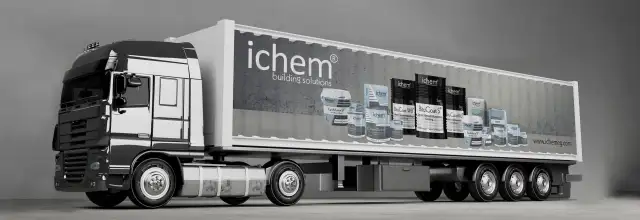
Control Joints in Concrete – Ichem Advanced Solutions
A Control Joint is a specialized type of joint used to control cracks caused by shrinkage or thermal expansion in concrete, floors, or walls.
By using Ichem Control Joints, you can precisely direct where cracks occur, enhance the aesthetic appearance of concrete surfaces, and reduce long-term maintenance costs.
Importance of Control Joints in Concrete
Crack Control
Guides cracks to occur in predetermined lines instead of random, uncontrolled locations.
Improved Aesthetic Appearance
Creates clean, organized lines that enhance the visual appeal of concrete floors and walls.
Reduced Maintenance Costs
High-quality joints minimize the need for future repairs and extend the life of the concrete structure.
💡 Ichem products are engineered to deliver all these benefits:
Product Code | Description | Application |
|---|---|---|
i348 | Flexible expansion and contraction joints | External concrete floors |
i345 | Tile joint control systems | Commercial and residential buildings |
i340 | High-performance flexible control joints | Industrial and infrastructure projects |
Types of Control Joints from Ichem
Cut Joints (Saw-Cut): Installed after concrete pouring — available in flexible solutions like i340.
Preformed Joints: Pre-made and installed before pouring — like i345.
Tooled Joints: Formed during concrete pouring using special tools — compatible with i348.
Applications of Ichem Control Joints
Industrial concrete floors: i340
Sidewalks and external pavements: i348
Commercial and residential buildings: i345
Stamped or polished concrete floors: i345, i340
How to Determine the Spacing Between Control Joints
Typically, joints are placed every 4 to 6 meters, depending on the slab thickness and the concrete type.
Ichem’s high-performance joint systems are designed with optimal flexibility to reduce the risk of random cracking.
Common Mistakes When Installing Control Joints
Delayed cutting after pouring: Using i340 minimizes this issue due to its high flexibility.
Improper joint spacing: Ichem products can be planned and customized to fit the project design.
Insufficient joint depth: i345 and i348 systems ensure optimal depth for proper crack control.
Conclusion
Ichem Control Joints provide the ideal solution for controlling cracks and improving concrete quality — whether in industrial, commercial, or outdoor projects.
By using Ichem’s innovative joint systems, you’ll achieve:
Precise crack direction and alignment
Durable, visually appealing surfaces
Long-term savings on maintenance and repair
Frequently Asked Questions (FAQ)
Q1: What is the difference between a Control Joint and an Expansion Joint?
A: A Control Joint directs cracks caused by shrinkage or thermal changes, while an Expansion Joint allows structural elements to expand and contract freely without stress. Ichem’s i340 and i345 provide practical, high-performance control joint solutions.
Q2: Where can I use Ichem Control Joints?
A:
Industrial concrete floors (i340)
External pavements and sidewalks (i348)
Commercial and residential buildings (i345)
Stamped or polished concrete floors (i345, i340)
Q3: What types of Control Joints does Ichem offer?
A:
Cut Joints (Saw-Cut): Post-pour cutting (e.g., i340)
Preformed Joints: Installed before pouring (e.g., i345)
Tooled Joints: Formed during pouring (e.g., i348)
Q4: How far apart should Control Joints be placed?
A: Generally every 4–6 meters, depending on concrete thickness and application. Ichem’s flexible joint systems help maintain ideal spacing and performance.
Q5: What are common installation mistakes?
A:
Delayed saw cutting after pouring
Incorrect spacing between joints
Shallow joint depth
Using i340, i345, and i348 minimizes these errors effectively.

